| 8000 BC |
Unknown
occupiers |
The discovery of the Grotta dell'Uzzo in north western Sicily between Capo San Vito and Scopello in 1975. It appears to be about 10,000 years old based on radiocarbon dating (Holocene epoch). Archeologists found implements similar to those found in the Cala dei Genovese grotto on the island of Lévanzo. (Spoto, Sicilia Antica) |
| 7000 BC |
Unknown
occupiers |
| | Earliest traces of humans found in the Addaura Caves on Monte Pellegrino near present day Palermo and in the Grotto Cala dei Genovesi on the island of Lévanzo. | 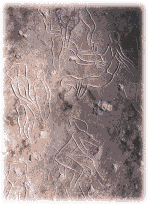 |
|
| 6000 BC |
Sicans |
| | Sicans arrive on the island. They are village-dwellers and farmers. Chief settlement was Sant' Angelo Muxaro near Agrigento. Click on the link to see an interactive version of the pie chart that graphically depicts the time from 6,000 BC to the present and relates the time period to the occupying power. | 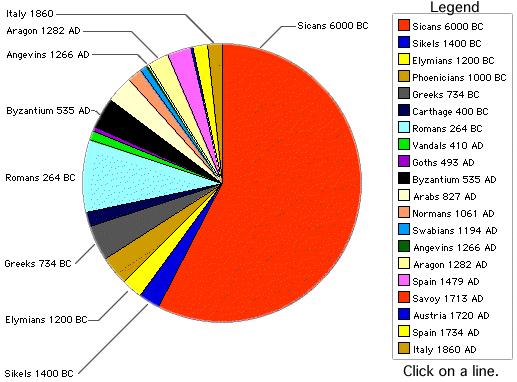 |
|
| 1400 BC |
Sikels |
First known occurrence of Sikels, who probably migrated from or through Italy. They lived in fortified hill towns and left large necropolises. They are said to have co-existed peacefully with the Sicans although they appear to have displaced the Sicans in the eastern part of Sicily. |
| 1200 BC |
Elymians |
The Elymians settled in western Sicily, in Eryx (Erice), Segesta, and Entella. Possibly descendents of the Trojans, according to Thucydides and Plutarch. (Spoto, 94) All traces disappear after Hellenization of the island. |
| 1000 BC |
Phoenicians |
The Phoenicians settled along the coasts of Sicily. After the arrival of the Greeks, they withdrew to Motya, Solus, and Panormos, current day Palermo. |
| 814 BC |
Carthage |
The Phoenicians establish the city of Carthage on the coast of Tunisia. |
| 800 BC |
Greeks and
Carthaginians |
Both established outposts on the island. The Greeks eventually go as far west as Himera on the north coast and Agrigento on the south coast. The Carthaginieans maintain control of western Sicily including Palermo. |
| 735 BC |
Greeks |
The Greeks begin to colonize Sicily starting with a group from Chalcis in Euboea who settle at Naxos. (Spoto, 333) |
| 500 BC |
Greeks |
The leading Greek city, Syracuse, established control over the other Greek colonies of Agrigento, Gela, Catania, Himera, and Messina. |
| 480 BC |
Greeks |
Gelon, tyrant of Syracuse, defeats general Hamilcar at Himera in 480 BC, bringing Carthaginian eastward expansion in Sicily to an end. |
| 452 BC |
Greeks |
An unsuccessful rebellion of the Sikels in southern Sicily, led by Ducetius. He was exiled to Corinth. Ducetius later led a group of Corinthians and Sikels back to Sicily where he established the city of Kale Acte on the northern shore, about midway between Himera and Messina. For more details and a map, refer to the article by Jona Lendering. |
| 440 BC |
Greeks |
Ducetius falls ill and dies. |
| 413 BC |
Greeks |
Syracuse defeats Athenian invaders at the Assinaros River |
| 400 BC |
Carthaginians |
Carthage maintains control of the western half of the island including Palermo. |
| 366 BC |
Greeks |
Plato returns for another visit to Sicily at the invitation of Dion. (Spoto, 295) |
| 287 BC |
Greeks |
Birth of Archimedes (287-211 BC) of Syracuse. |
| 269 BC |
Greeks |
Hieron II is king of Syracuse. |
| 264 BC |
Greeks - Romans |
The Romans intervene against the Carthaginians in Sicily, precipitating the First Punic War (264-241 BC). (Punic, Poenicus or Phoenician.) After the Roman victory and the death of Hieron II of Syracuse (216 BC), Rome gained control of most of the island. They exploited the island economically. Sicily became known as the Breadbasket of Rome. |
| 211 BC |
Greeks - Romans |
Marcus Claudius Marcellus conquers Syracuse: Sicily under the Romans. Archimedes is killed by a Roman soldier although Marcellus had ordered him to be taken alive. |
| 63 BC |
Romans |
Pompey sacks Jerusalem and brings Jews to Italy as slaves. Roman Proconsul Crassus is said to have sold thirty thousand Jewish slaves. (See the Cipolla entry in the Bibliography.) |
| 410 AD |
Vandals
and Goths |
Sicily was taken by the Vandals (Germanic). |
| 493 AD |
Goths |
Sicily under the dominion of Theodoric the Great (c.454-526) king of the Ostrogoths. |
| 535 |
Greeks |
General Belisarius wins back Sicily from the Goths for Byzantium. |
| 827 |
Arabs |
Sicily falls to the Muslim Arabs. (827 - 1072) The Arabs begin their thirty year battle to gain control of Sicily with their landing at Cape Granitola on the south western tip of Sicily, south of Mazara. |
| 903 |
Arabs |
The Arabs under the Aghlabite caliphs (Sunnis) gain control of all of Sicily which they divided into three sections. Conversion to Islam could be avoided by payment of the gezia tax. |
| 909 |
Arabs |
The Fatimids (Shiites) overthrew the Aghlabites. During their rule they promoted both economic and cultural development. |
| 969 |
Arabs |
The Fatimids under Jawhar, founded a new city near al-Fustat, named al-Mansuriyah. The name was changed to al-Qahirah, or Cairo. This then became their capital. At about this time Sicily was made a semiautonomous emirate. |
| 972 |
Arabs |
First documentary mention of a Jewish Quarter in Palermo. |
| 1061 |
Normans |
May 18 the Normans land in Sicily. By 1091 with the fall of Noto, they had conquered all of Sicily from the Arabs. Norman Sicily was marked by linguistic and religious tolerance. Hebrew, Arabic, Latin, and Greek were recognized as official languages. Roger I was both the ecclesiastical and secular leader. |
| 1066 |
Normans |
On October 14, 1066, while Roger I was conquering Sicily, his cousin William, the Duke of Normandy, defeated King Harold II of England at the Battle of Hastings and assumed the English crown as William I. |
| 1101 |
Normans |
| | Death of Roger I. During the minority of Roger II, his mother Adelaide was regent. Roger II reigned for 42 years starting in 1112. He is the first king of Sicily (1130-1154).
He was an able successor to Roger I and brought his kingdom to the pinnacle of political, economic, and cultural achievement. | 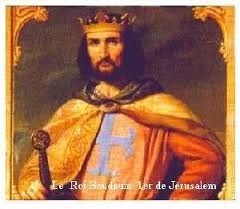 |
|
| 1139 |
Normans |
ROGER II was recognized (1139) by Pope Innocent II as the first king of Sicily (1130-1154) and of the Norman territories in southern Italy. |
| 1154 |
Normans |
William (I) “the Bad” (1154-66) was a much less able ruler but he secured the treaty of Benevento. Benevento was the papal residence at that time. |
| 1156 |
Normans |
Treaty of Benevento agreed to by Pope Adrian IV. The pope's emissaries were Roland of Siena and Oddone Frangipane. William I of Sicily sent Maio of Bari and two ecclesiastics, Hugh of Palermo and Romuald of Salerno. William was recognized as King of Sicily, Apulia, Calabria, Campania, Capua and the coastal cities of Amalfi, Naples, and Gaeta. |
| 1166 |
Normans |
William (II) ‘the Good” (1166-1189) died at age 35 without heir. |
| 1172 |
Normans |
William II orders the building of the Basilica of Monreale in 1172. It was largely completed by 1185, an incredible achievement. The interior walls of the Cathedral are decorated with 139 mosaics telling the stories of the Old and New Testaments. |
| 1190 |
Normans |
Tancred - Sicilian barons rebel and choose Tancred, a grandson of Roger II to be king of Sicily. |
| 1194 |
Swabians |
| Frederick II (1194-1250) - Through the marriage of Constance, heiress of the last Norman king, to Holy Roman Emperor Henry VI, a son of Frederick I Barbarossa (1122-1190) Sicily passed in 1194 to the Hohenstaufen dynasty. Their son, Holy Roman Emperor FREDERICK II, spent his childhood in Sicily. He was a child of four when his mother died and Pope Innocent III governed Sicily until 1208 when Frederick II reached the age of 14. Like Roger II, Frederick held brilliant court and effected important administrative reforms. His first of three wives was Constance of Aragon. She died in 1222. He married Isabella in 1225. She brought him the crown of Jerusalem as a dowry. She died in childbirth in 1228. His third wife was Bianca Lancia of Piedmont. He knew Latin, Sicilian, Greek, Arabic, French, and of course, German. He had his own private zoo, wrote a treatise on falconry. He was even versed in philosophy and mathematics. He unified weights and measures, imposed taxes on everything, abolished gambling. He required the Jews to wear identifying clothing (a precursor to Hitler's yellow star).
A search on Google ebooks for a history of Frederick II yields several old volumes already scanned and available for download or reading online. Here is the link to Volume I of one of them: HISTORY of FREDERICK THE SECOND, EMPEROR OF THE ROMANS, by Thomas Laurence Kington-Oliphant. | 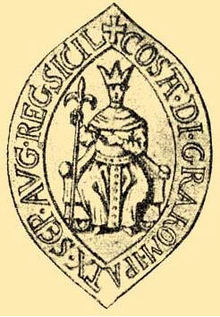
Constance of Aragon |
|
| 1215 |
Swabians |
On June 15, 1215 while the Swabians were still ruling in Sicily, the Barons in England succeeded in wresting from the Angevin King John, 63 articles which have come to be known as the Magna Carta. They established the rights of the church, the supremacy of the rule of law, the principle of judgement by peers, etc. They also reveal the prejudices of the time as they relate to women and Jews. (See paragraphs 10, 11, and 12 concerning Jews and search on "widow" and "daughters" for quick references to the rights of women.) |
| 1231 |
Swabians |
The Constitutions of Melfi are considered to be Frederick II's outstanding legislative accomplishment. After his death (1250), his weak successors were outmaneuvered by the papacy. |
| 1266 |
Angevins |
The pope placed the Angevin CHARLES I on the throne of Sicily and Naples as a papal vassal. |
| 1282 |
Sicily |
In this Abbreviated Chronology of Sicilian History, this is the only entry that lists Sicily as the ruling power. This came about as the result of the spontaneous uprisng that came to be known as The War of the Sicilian Vespers--the revolt of the Sicilians against the rule of the ANGEVINS--begun spontaneously at the time of vespers (evening worship) on Easter Monday, 3/31/1282, at the Church of The Holy Spirit in Palermo and over the next several months it resulted in the massacre of almost the entire French population of Sicily. The definitve history was written by Michele Amari. (see the Bibliography) The FRUNTI NAZZIUNALI SICILIANU "SICILIA INDIPINNENTI" sponsors an annual commemoration of the event at the Chiesa del Santo Spirito, all'interno del Cimitero di Sant'Orsola. This brief flirtation with Sicilian Independence and self rule ended with the involvement of Peter III of Aragon whose help had been sought by the revolutionaries. Seeking the help of Peter of Aragon was a colossal blunder on the part of the Sicilians and resulted in 572 years of Spanish domination. |
| 1282 |
Aragon |
Rejected by the Pope, the Sicilians turned to Peter III of Aragon for support. After a five day trip from Africa, he lands at Trapani on August 30, 1282. Although the Aragonese secured control of Sicily, the Angevins retained Naples, and wars between the two continued until 1372. |
| 1283 |
Aragon |
The execution, by decapitation of Il Gualtiero di Caltagirone on May 22, 1283 in the piazza S. Giuliano. This act signaled the triumph of Aragon and the end of any lingering aspirations for Sicilian Independence born with the Vespers. |
| 1296 |
Aragon |
| | Frederick III (1296-1337) King of Sicily. | 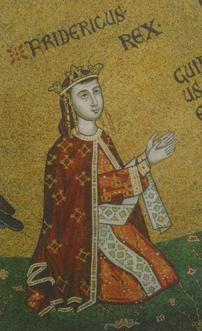 |
|
| 1299 |
Aragon |
On July 4 the naval battle of Capo d'Orlando was fought so furiously that it is said to have turned the sea red with the blood of its victims. Although the Sicilians ultimately lost the battle, the enemy forces were so devastated that they could not proceed to attack Messina, which was the capitol of Sicily at that time. A tragically significant battle during the War of the Sicilian Vespers. |
| 1302 |
Aragon |
Frederick III 1272-1337 King of Sicily (1296-1337) the third son of Peter III of Aragon. In the Peace of Caltabellotta (1302) Charles of Anjou and Pope Boniface VIII recognized Frederick as king of Trinacria for his lifetime. |
| 1372 |
Aragon |
Treaty of Avignon ends the wars between Aragon and the Angevins, with the papacy also giving up its claim to temporal rule of Sicily. |
| 1479 |
Spain |
Queen Isabella of Castile starts the Inquisition as a domestic policy to secure control. After her husband Ferdinand becomes king of Aragon, he exports the inquisition to the entire kingdom. |
| 1492 |
Spain |
On March 31 King Ferdinand decrees the expulsion of Jews. Sicilian notables write a petition to the Spanish King, only succeeding in delaying the expulsion. After a presence of more than 1500 years, Jews officially disappear from Sicily. Nel 1492 gli Ebrei sono espulsi dalla Spagna; e il 18 giugno dello stesso anno viene l'ordine di espulsione anche dalla Sicilia e dalla Sardegna (appartenenti alla Spagna); ordine che viene eseguito, dopo una breve dilazione, entro il 1492. Neppure un Ebreo rimane in Sicilia; la maggioranza degli Ebrei siciliani si rifugia nelle città dell'Italia Meridionale. Né in Sardegna: delle Comunità ebraiche di Sassari, Cagliari e Alghero non rimane più traccia. In 1492 the Jews are expelled from Spain; and on June 18 of the same year the order of expulsion also arrives in Sicily and Sardinia (belonging to Spain); an order that is carried out, after a brief delay, within 1492. Not a single Jew remains in Sicily; the majority of the Sicilian Jews find refuge in the cities of southern Italy. Nor in Sardinia: does a trace remain of the Jewish communities of Sassari, Cagliari, and Alghero. (ref. www.morasha.it/ebrei_italia/index.html)
|
| 1516 |
Spain |
Il Ghetto si trova nel sestiere di Cannaregio ed è sede della Comunità Ebraica di Venezia. I primi insediamenti di ebrei nel Veneto sono molto antichi risalendo al IV-V secolo. La comunità si incrementò in seguito all'espulsione degli ebrei dalla Spagna nel 1492. Centinaia di migliaia di persone cercarono rifugio in Portogallo, Turchia e Italia.
A Venezia la comunità crebbe e si organizzò, godendo un clima di relativa tolleranza, finché il Consiglio dei Pregadi (Senato) dispone il 29 marzo 1516 che tutti gli ebrei dovessero obbligatoriamente risiedere nel "Ghetto nuovo". Nasce così un'istituzione che verrà poi ampiamente applicata anche nel resto d'Europa. ref. http://it.wikipedia.org/wiki/Ghetto_di_Venezia.
The Ghetto, the location of the Jewish community of Venice, is found in the sixth division of Venice called the Cannaregio.
The first settlements of Jews in the Veneto took place in the 4th and 5th centuries. The community was enlarged following the expulsion of the Jews from Spain in 1492. Hundreds of thousands of persons sought refuge in Portugal, Turkey, and Italy.
The community grew in Venice and enjoyed a climate of relative tolerance until March 29, 1516 when the Senate ruled that all the Jews would be required to reside in the "Ghetto nuovo". Thus an institution was born that was then to be applied to the rest of Europe.
Some of the earliest ghettos were in Muslim countries. In Morocco in 1280, Jews were forced to reside in segregated quarters called millahs. In the 13 and 1400s forced segregation occurred in ghettos in Frankfurt and Prague. The Prgue ghetto was called Judenstadt. (ref. http://www.britannica.com/bcom/eb/article/5/0,5716,37405+1+36690,00.html)
So it appears that the institution was not born in Venice, but may have been born in Morocco or some other Muslim country. |
| 1542 |
Spain |
Short but serious earthquake in eastern Sicily and Caltagirone. |
| 1545 |
Spain |
The beginning of the Council of Trent. Sessions 1-10 were held from 1545-47. Sessions 11-16 from 1551-52, and Sessions 17-25 were held from 1562-3. Record keeping started at San Giorgio on January 1, 1566. Interestingly enough, some of the early records in the Cathedral in Caltegirone were indexed by the first name rather than the last name. |
| 1555 |
Spain |
| Pope Pau IV (5/23/1555-8/18/59) proclaims the Bull Cum nimis absurdum on July 14, 1555. It forced the Roman Jews into a ghetto in the rione Sant'Angelo, in the area surrounded by today's Via del Portico d'Ottavia, Lungotevere dei Cenci, Via del Progresso and Via di Santa Maria del Pianto close to the Tiber and the Theater of Marcellus. The area of Rome chosen for the ghetto was the most undesirable quarter of the city, owing to constant flooding by the Tiber River.
(The source of this text and the image of the ghetto is wikipedia, the free encyclopedia and is licensed under the GNU Free Documentation License (GFDL). | 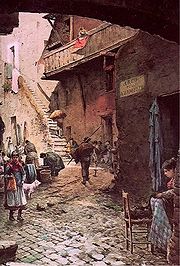 |
|
| 1566 |
Spain |
The earliest book in the archives of the church of San Giorgio in Caltagirone begins with January 1, 1566. According to tradition, the church of San Giorgio was first constructed in the 1100's by the Genovese who had helped the Normans defeat the Arabs (1061-1091). A listing of the pastors of San Giorgio extends from 1517 to 1968, when the present pastor was appointed. |
| 1575 |
Spain |
Antonio Veneziano (1543-1593) a contemporary of Cervantes (1547 - 1616) with whom he shared a cell after being captured by Barbary pirates and held for ransom. We don't know when Veneziano was captured but do know that Cervantes and his brother had been captured in 1575. Cervantes reportedly said that Veneziano had earned the keys to Paradise with his poetry collection entitled Cèlia. In both Italian and Sicilian "Cèlia" means banter, jest or joke, in Sicilian it can also mean a woman who's a little dense. |
| 1631 |
Spain |
Giacomo Paolo Dieli is born on February 4 in Caltagirone to Vincenzo & Angelina Dieli. This is the earliest Dieli baptismal certificate in the existing archives in the church of San Giorgio in the old part of Caltagirone. |
| 1672-1678 |
Spain |
The revolt of Messina (1672-78) In 1672, the artisans of Messina (the marvizzi) revolted against patrician rule (the merri) and took control of the city, a social revolt which did not question Spanish rule. In July 1674 a patrician force overcame the rebel force; the patricians retook control of the city, expelled the Spanish governor and called for French aid.
France, since 1673 at war with Spain (Dutch War of Louis XIV., 1672-1678), dispatched several expeditions to aid Messina, while the Dutch Republic sent a fleet (1675) under Michiel Adriaenszoon de Ruyter, who temporarily blockaded Messina (April 1676), but then fell in battle against the French, commanded by Du Quesnes (April 22nd 1676, Battle of Sicily/of the Etna; the battle was a Dutch victory). Messina held out until the end of the war; when peace was negotiated in 1678, the French withdrew their support, and the Spanish reestablished control.
This revolt is the basis for these proverbs:
Nun sapemu cui su' li merri e cu' su' li marvizzi. Source: Bellantonio, II 187.
Eng. We can't tell the one from the other.
Lit. We don't know which are the Merli and which the Malvizzi.
Cci su' cchiù merri ca marvizzi. Source: Bellantonio, II, 25
Eng. There are more blackbirds than thrushes.
See this website for refererance. |
| 1693 |
Spain |
Caltagirone and most of eastern Sicily destroyed by earthquake on Jan 11. |
| 1713 |
Savoy |
Sicily passed briefly to the house of Savoy. The Peace of Utrecht (1713-14) made Victor Amadeus II king of Sicily. |
| 1720 |
Austria |
Sicily traded to the Austrian Habsburgs for Sardinia. (Just like that.) |
| 1734 |
Spain |
During the War of the Polish Succession, both Sicily and Naples were conquered by the Spanish Bourbon Prince Charles. |
| 1758 |
Spain |
Ignazio Giuseppe Dieli is born on April 6 in Caltagirone to Antonino and Felicia Strazzo Dieli. No other siblings could be found in the archives. It may be that Antonino married more than once. Antonino's year of birth is estimated to have been around 1730, but a baptismal certificate could not be found in the archives of San Giorgio in Caltagirone nor in subsequent seaches of the cathedral archives in Caltagirone. |
| 1759 |
Spain |
Charles succeeded to the Spanish throne, Sicily and Naples passed to his son Ferdinand I. The Spanish Bourbons ruled from Naples until the French forced Ferdinand to flee to Sicily in 1806. |
| 1767 |
Spain |
Jesuits expelled from Sicily, their university in Caltagirone was closed. |
| 1776 |
Spain |
In the New World, the American Colonies declare their independence from the United Kingdom of Great Britain on July 4, 1776. |
| 1782 |
Spain |
March 16 - The Tribunal of The Holy Office, known as the Holy Inquisition is abolished in the Kingdom of Sicily by King Ferdinand III. The 225th anniversary of the abolition was noted by Giuseppe Scianò, Secretary of the Frunti Nazziunali Sicilianu (FNS) on March 15, 2007. |
| 1787 |
Spain |
Mario Annunziato Dieli is born on July 20 in the town of Caltagirone to Ignazio & Maria Rosa Dieli. He is their fourth child and their second boy. |
| 1795 |
Spain |
Francesco Paolo Di Blasi (1753-1795) is decapitated on May 20th in Palermo. He was accused of wanting to establish a free and independent Republic of Sicily. Di Blasi was a jurist, historian, philosopher and writer. |
| 1799 |
Spain |
Revolts in Caltagirone. |
| 1812 |
Spain |
Adoption of a constitution, approved by the Sicilian parliament on July 19 and sanctioned by the king on August 10. It reiterated the independence of Sicily from Naples. |
| 1814 |
Spain |
Salvatore Giacomo Dieli is born on June 9 in the town of Caltagirone to Mario & Gesuelda Micicheri Dieli. He is their second child. |
| 1816 |
Spain |
After the Napoleonic Wars, Ferdinand I adjourned parliament, abolished the constitution of 1812 and formally combined his realms as the Kingdom of the Two Sicilies. |
| 1820 |
Spain |
Riots of 1820 were put down with such force that it resulted in the spread throughout Sicily of the secret society, the Carbonari. |
| 1837 |
Spain |
The tombs in the wall around the Church of the Holy Ghost were filled in three weeks by the dire pestilence which devastated Sicily. (Amari, v 1, 179) |
| 1848 |
Spain |
| | January 12 - Revolution of 1848 ruthlessly put down with naval bombardment of Messina (1848) and Palermo (1849). Ferdinand II becomes known as King Bomba. With the surrender of Palermo on 15 May 1849, head of state, President Ruggero Settimo goes into exile on Malta. | 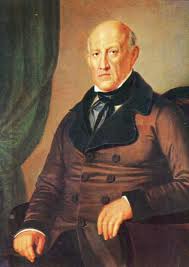 |
|
| 1860 |
Spain |
May 11 - Giuseppe Garibaldi lands at Marsala, Sicily with a 1000 man force of volunteers (Red Shirts) and eventually routs the Spanish forces, taking Sicily and southern Italy, which then joined the Kingdom of Savoy (plebiscite October 21) and ultimately became part of a united Italy (1870). |
| 1861 |
Spain |
Francis II formally abdicated. |
| 1862 |
Italy |
January 1 - revolt at Castellammare del Golfo against the annexation of Sicily to the Kingdom of Italy. |
| 1862 |
Italy |
June 30 - Francesco di Paolo is born in the city of Caltagirone to Salvatore and Giovanna Ragusa Dieli. He is their sixth child. |
| 1866 |
Italy |
The revolution of Sette E Mezzo, September 15-22, 1866, called into question the so-called plebecite favoring annexation. The revolution was suppressed by a fierce three day Italian naval bombardment of Palermo and an artillery offensive led by General Raffaele Cadorno. Fierce repressive measures followed. Sicilian folklore now includes the expression, "Succede un Sette E Mezzo" to describe a catastrophe. |
| 1882 |
Italy |
Giuseppe Garibaldi died on June 2, 1882 at Caprera. |
| 1886 |
Italy |
Salvatore Dieli is born on February 2 in the town of Caltagirone to Francesco di Paolo & Concetta Recca Dieli. He is the first male child. |
| 1908 |
Italy |
Disastrous Messina - Reggio earthquake of 1908 combined with subsequent tsunamis result in the total destruction of the city of Messina and the death of as many as 100,000 people in the Reggio Calabria and Messina areas. The epicenter was in the Straits of Messina. |
| 1922 |
Italy |
Mussolini comes to power. He eventually bans the use of all languages other than Italian. All Sicilian language publishing is forbidden. Even today (1997) there is no Sicilian language newspaper in Sicily. |
| 1943 |
Italy |
During World War II, Sicily was the scene of heavy fighting. The Allies launched an invasion from North African bases on July 9-10, 1943. Patton landed forces at Licata and Gela and Montgomery landed at several places south of Syracuse. By the end of the year the facists were overthrown and Italy. under a provisional military government led by Pietro Badoglio, joined the Allies. The Nazi still held central and northern Italy. |
| 1944 |
Italy |
The Massacre of October 19, 1944.
Unarmed protesters peacefully demanding bread and work were fired upon by Italian soldiers on Via Maqueda in Palermo. 24 of the protesters were killed and 158 were seriously wounded by grenades and rifle fire, turning the street red with the blood of innocents. |
| 1945 |
Italy |
April 25, Rome is liberated. |
| 1945 |
Italy |
New nation is formed. A monarchy under Victor Emmanuel III. |
| 1946 |
Italy |
Umberto II is King of Italy. Sicily becomes one of five autonomous regions (1946). |
| 1948 |
Italy |
With the adoption of the new constitution on June 2nd, Italy transitions from a Monachy to a Republic. |
| 1949 |
Italy |
Italy joins the NATO alliance. |
| 1958 |
Italy |
Italy joins the European Common Market. |
| 1964 |
Italy |
Andrea Finocchiaro Aprile died in Palermo on January 15. He had been the leader of the Sicilian Independence Movement from 1943 to 1948. |
| 1968 |
Italy |
A huge earthquake rocks a large area of western Sicily late Sunday night, January 14. The towns of Gibellina and Salaparuta suffered the heaviest damage at 90%. Here's a map of the area affected by the earthquake. |
| 1979 |
Italy |
Arba Sicula is founded by Sicilian-Americans in Brooklyn to "define, preserve and disseminate our ancient heritage...". |
| 1982 |
Italy |
The Mafia murders General dalla Chiesa. Magistrate Giovanni Falcone gathers information against the Mafia including detailed information from informant Tommaso Buscetta. |
| 1986 |
Italy |
Hundreds of Mafiosi are indicted in super-trials. |
| 1992 |
Italy |
On May 23 the Mafia murders Magistrate Giovanni Falcone, his wife Magistrate Francesca Morvilla, and three bodyguards, Antonio Montinari, Rocco Di Cillo, and Vito Schifani in a massive explosion on the highway from the airport.
On July 19, Paolo Borsellino and five bodyguards: Claudio Traina, Eddie Walter Cusina, Emanuele L Muli, Agostino Catalano, and Emanuela Loi are murdered by a car bomb on Via D'Amelio. There are massive anti-Mafia demonstrations in Palermo. |
| 1992 |
Italy |
In commemoration of the fifh Centenary of the Proclamation of the Expulsion of the Jews by King Ferdinand in 1492, a meeting of scholars and researchers into Jewish history in Sicily is held in Palermo. June 15-19, Palermo, The Vth International Convention of Italia Judaica. The meeting convened at the Palazzo dei Normanni. Sessions continued at the Astoria Palace Hotel. Thirty two of the presentations were published in 1995 by the Ministerio Per I Beni Culturali E Ambientali, Ufficio Centrale Per I Beni Archivistici. In his message of greetings at the opening of the convention, Aldo Sparti, Director of State Archives of Palermo took note of the worldwide preparations for celebrating the 500th anniversary of Columbus Day and poignantly recalled that 1492 is also the year of the start of a new wave of persecution of the Jewish people. |
| 1996 |
Italy |
Arthur & Alice Dieli spend five glorious months in Sicily from February to June. They share an apartment with their daughter Mary and their nephew Patrick for some of this time. During their stay they do a considerable amount of family research and find archives of Dielis dating as far back as 1631 in the parish archives of San Giorgio. They were able to trace a direct line to Antonino & Felicia Strazzo Dieli by using the baptismal certificates in those same San Giorgio Archives. Antonino's baptismal certificate could not be found but it's estimated he was born about 1730. |
| 1997 |
Italy |
On Friday, September 26, twenty four mob bosses were convicted of the murder of Giovanni Falcone, his wife, prosecutor Francesca Morvillo, and three bodyguards. The twenty four received life sentences. Six others were given lesser terms. The seven judge court in Caltanisetta, Sicily took 25 days to reach its verdict. |
| 2001 |
Italy |
A Jet Propulsion Lab News Release on July 25, 2001 reported on the Mount Etna Volcanic explosion. It said, in part, "...the Mount Etna volcano exploded on July 22, 2001. Etna is located near the eastern coast of Sicily, to the southwest of mainland Italy. Major eruptions have been issuing from both summit and flank vents. Fine ash falling onto the Province of Catania closed the local airport, and a state of emergency was declared for the town of Nicolosi, which was threatened by lava flows from the southern flanks of the volcano." The picture from outer space shows the huge ash plume. According to Anna Miceli Dieli, ash from Etna is falling on Caltagirone and coating everything. |
| 2005 |
Italy |
April 25. The first Rabbi led Passover Seder in Sicily in over 500 years. The celebration took place at Piano Battaglia in the province of Palermo and was led by Rabbi Barbara Aiello. |
| 2007 |
Italy |
| | May 1. Vulcan upstages May Day. A dramatic picture of the eruption and lava flow down the south-eastern slope of Mount Etna. | 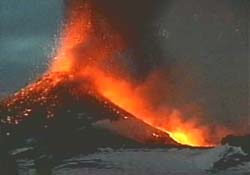 |
|







